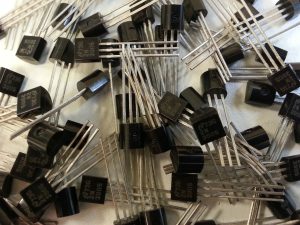Piezoelectric Arrays: Motion Processing
Piezoelectric arrays have been garnering attention in the field of motion processing due to their unique capabilities. These arrays are composed of piezoelectric elements, which have the ability to convert mechanical stress into electrical signals. These signals can then be used to control and manipulate motion in a variety of applications. In this article, we will delve into the world of piezoelectric arrays and explore their role in motion processing.
What are Piezoelectric Arrays?
Piezoelectric arrays are a set of piezoelectric elements that are arranged in a specific pattern. These elements are usually made of materials such as ceramics, crystals, and polymers, which possess the property of piezoelectricity. This means that when these materials are put under stress, they produce an electric charge.
How do they work?
The working principle of piezoelectric arrays is based on the piezoelectric effect. When mechanical stress is applied to the array, the piezoelectric elements produce electrical signals. These signals are then amplified and processed, which results in the movement of the structures connected to the array. This movement can be controlled by manipulating the amplitude and frequency of the electrical signals.
Applications of Piezoelectric Arrays in Motion Processing
Piezoelectric arrays have found numerous applications in the field of motion processing. One of the most common applications is in actuators, where they are used to control the movement of different parts in a system. These arrays can also be used for precise positioning and fine-tuning of motion in devices such as micrometers and motors.
Another emerging application of piezoelectric arrays is in haptic feedback technology. Haptic feedback refers to the sense of touch in a virtual or augmented reality environment. By using piezoelectric arrays, developers can create realistic haptic feedback, making the user experience more immersive and engaging.
Moreover, piezoelectric arrays are also used in ultrasonic motors, which are compact and highly efficient motors that use high-frequency vibrations to generate motion. These motors are used in a wide range of applications such as robotics, medical devices, and industrial equipment.
Advantages of Piezoelectric Arrays in Motion Processing
Piezoelectric arrays have several advantages over traditional methods of motion processing. Firstly, they are highly precise and can produce extremely small movements, making them ideal for applications that require high accuracy. Additionally, these arrays have a quick response time, which allows for rapid and precise motion control. They are also compact and require minimal power, making them suitable for portable devices.
Moreover, piezoelectric arrays can operate in extreme temperatures and harsh environments, unlike other motion processing technologies. This makes them ideal for use in industries such as aerospace and defense.
Future Developments
With advancements in technology, piezoelectric arrays are expected to play a bigger role in motion processing in the future. Researchers are continuously exploring new materials and design methods to improve the efficiency and capabilities of these arrays. There is also a growing interest in using piezoelectric arrays in soft robotics, as they are flexible and can conform to different shapes and surfaces.
Conclusion
In conclusion, piezoelectric arrays have proven to be a valuable tool in motion processing, with their precision, speed, and compactness. As technology progresses, these arrays are expected to revolutionize various industries and bring about new and innovative applications. From robotics to haptic feedback, the potential applications of piezoelectric arrays are endless, making them a promising technology for the future.










